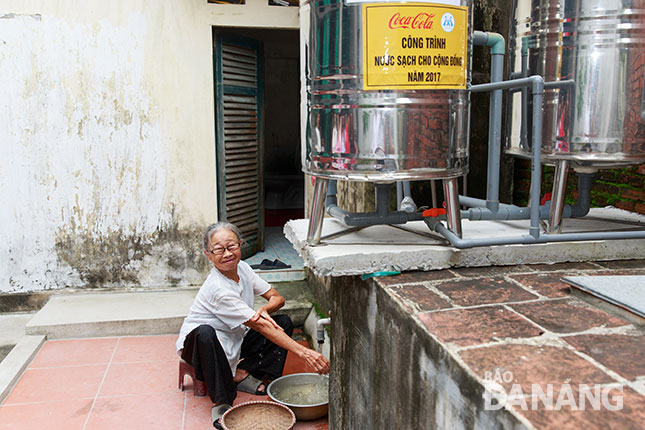Coca-Cola Vietnam helps locals access clean water
Officially launched in 2009 by the Coca-Cola Beverages Vietnam Ltd (Coca-Cola Vietnam), the ongoing large-scale ‘Clean Water for Vietnamese Communities’ project has proven very effective.
 |
| A local senior woman feels happy with clean water |
It is a joint project between Coca-Cola Vietnam, United Nations Human Settlements Programme (UN-HABITAT), and Center for Research Family Health and Community (CEFACOM).
Most notably, many people in Da Nang, especially those who live in local suburb and rural areas, have benefited so much from this meaningful project.
Between 2009 and 2011, Coca-Cola Vietnam partly funded the installation of water pipes in the communes of Hoa Hiep Bac, Hoa Hiep Nam, Hoa Khanh Nam and Hoa Minh in Lien Chieu District. Also, free water meters were provided for over 1,000 local families which lived below the city’s poverty thresholds
Apart from local families, a total of 7 local pre-schools, and primary and junior high schools were also given financial aid by Coca-Cola Vietnam to upgrade their sanitation facilities for their teaching staff and pupils.
Before 2012, the number of residents in Hoa Vang District’s rural areas accessing clean water had been very low because the majority of them used water sourced from either natural water sources or drilled wells. Thanks to the meaningful programme, a total of 14,114 residents from 1,559 poor families in the communes of Hoa Lien, Hoa Ninh, Hoa Son and Hoa Phong have to date accessed safe water.
Next year, under the project, clean water supply programmes will be continued to be implemented in Hoa Vang District in a bid to increase the number of local habitants using clean water, and accelerating the upgrading of rural areas in this district.
The General Director of the Da Nang Water Supply Company (DAWACO), Mr Ho Huong, expressed his delight at seeing many local businesses become actively involved in helping local residents in suburb and rural areas access fresh water. In the past, the majority of local residents living in these areas used alum-contaminated water from drilled wells.